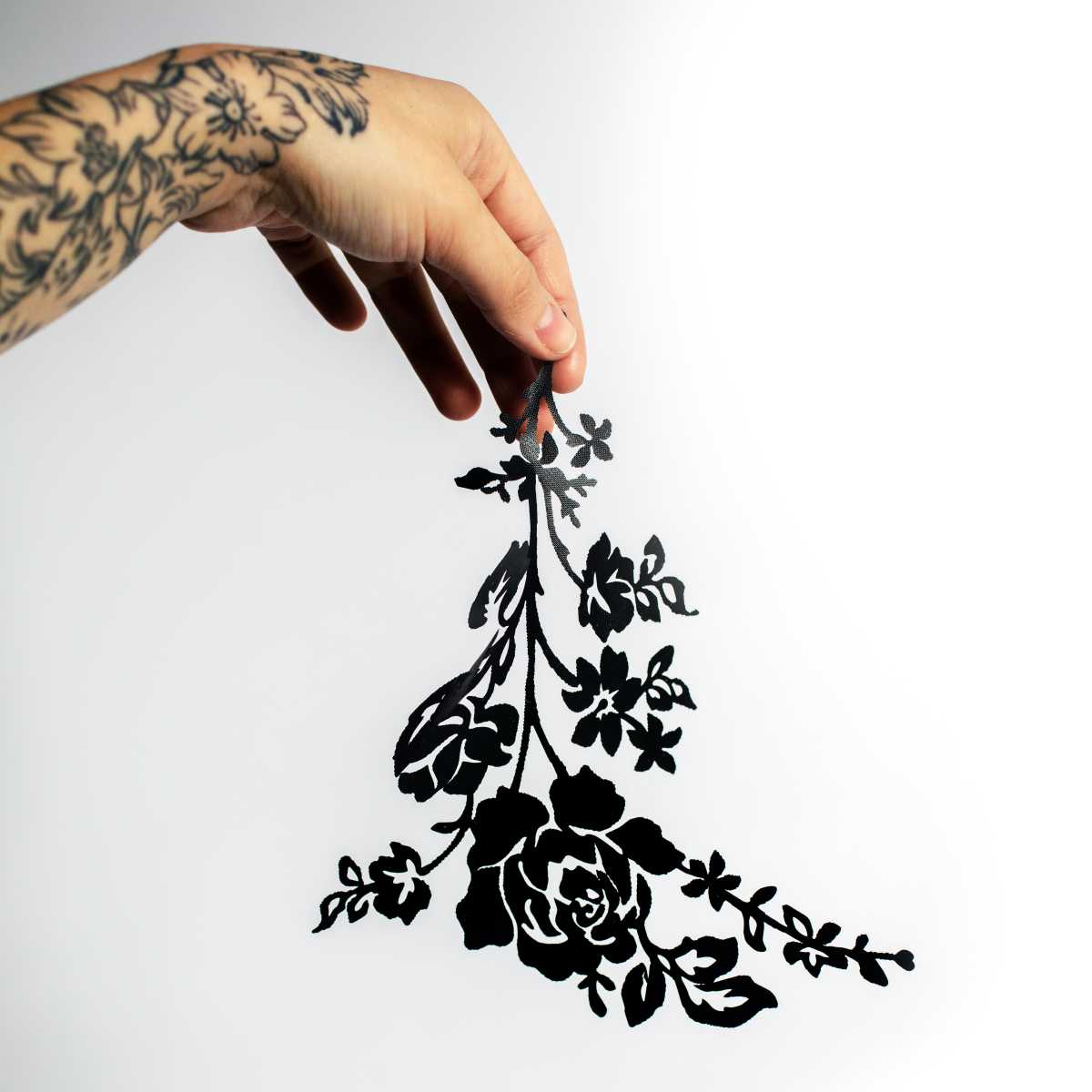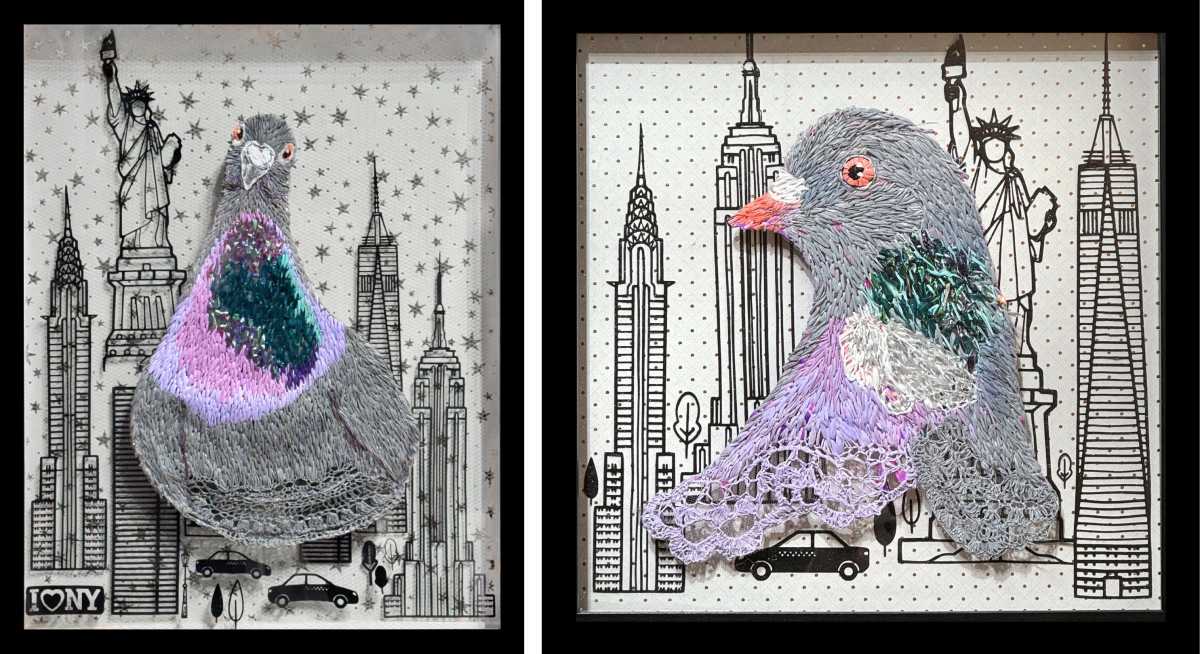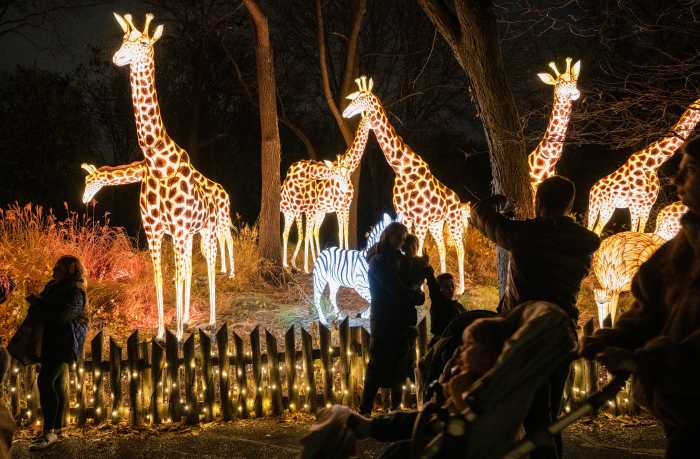Only the rarest of artists would look at a symbol of waste and perceive, not failure, but possibility. Padina Bondar is one of those rare figures.
There is a strange poetry in the afterlife of an overlooked object. Think of the familiar plastic bag—the translucent ghost drifting through crosswalks, pressed into storm drains, tangled like a forgotten ribbon in the branches of city trees. Its biography is brief, utilitarian, and embarrassingly human: designed for convenience, discarded without thought, destined for an eternity that outlasts its purpose.
But Bondar, whose work is set to be on exhibit by DTR Modern at the National Arts Club, sees something else.
She collects the very materials society rejects and approaches them with the reverence usually reserved for fragile antiquities. Each plastic bag is washed, stripped, split, and slowly coaxed into something astonishing: fine twine, filament-level strands, and eventually lace that rivals the handiwork of Renaissance lacemakers.

Her process resembles a ritual rather than a technique—methodical, meditative, grounded in the belief that discarded matter contains a dormant intelligence waiting to be awakened.
This metamorphosis of refuse into luxury textile speaks to a deeper lineage within environmental and art history. Long before ecological crisis dominated political discourse, artists understood that material carries moral weight.
The Transcendentalists found virtue in communion with nature. The Land Artists of the late twentieth century dug, carved, and sculpted the earth itself to expose humanity’s estrangement from the land. Arte Povera confronted industrial excess through scarcity and subversion. Each of these movements predicted the anxieties of their time, offering a preview of the environmental reckoning to come.
Bondar extends that lineage into the present moment, where climate emergency is no longer philosophical but perilously real. Her work does not rest in critique; it operates as solution. The plastic bag—one of the most persistent artifacts of global consumption—is reborn as lace, the most delicate symbol of care, precision, and femininity. This inversion is intentional. The material retains its history while shedding its shame, asking viewers to reconsider the lifecycle of what they touch, discard, and ignore.

Collectors and institutions who understand the shifting terrain of contemporary aesthetics will recognize Bondar’s significance immediately. Her pieces articulate a new model for value, one rooted in ecological responsibility and technical rigor rather than novelty or trend. The future of luxury—authentic luxury—will be defined by creators like her, who elevate the overlooked and propose an ethical vocabulary for beauty. Acquiring such work is not only an act of patronage; it is a gesture of cultural prophecy.
Bondar’s textiles contain an exquisite contradiction: they are both fragile and forceful, romantic and confrontational, historically anchored and futuristically urgent. They embody the tension of our era—a world caught between the seduction of disposability and the necessity of reinvention. Her lace holds within its knots the record of a planet in crisis and the invitation to imagine a different fate.
This is why her upcoming exhibition is essential viewing. It offers more than an aesthetic experience; it offers a blueprint. It asks viewers to contemplate not only what beauty can be, but what responsibility must become.
Save the date
DTR Modern Presents: Padina Bondar
The National Arts Club – East & West Galleries
Dec. 3, 2025 – Jan. 2, 2026



































